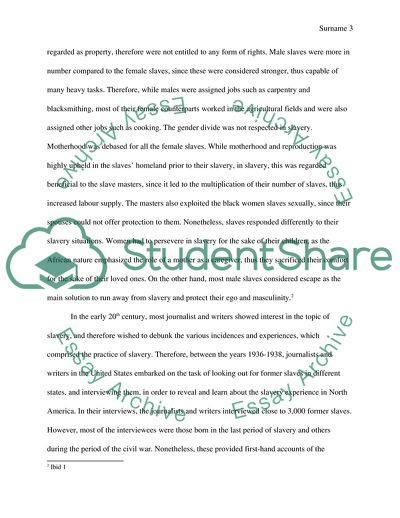Cite this document
(Slave Experience in North America Essay Example | Topics and Well Written Essays - 1750 words - 1, n.d.)
Slave Experience in North America Essay Example | Topics and Well Written Essays - 1750 words - 1. https://studentshare.org/history/1801769-slave-experience-in-north-america
Slave Experience in North America Essay Example | Topics and Well Written Essays - 1750 words - 1. https://studentshare.org/history/1801769-slave-experience-in-north-america
(Slave Experience in North America Essay Example | Topics and Well Written Essays - 1750 Words - 1)
Slave Experience in North America Essay Example | Topics and Well Written Essays - 1750 Words - 1. https://studentshare.org/history/1801769-slave-experience-in-north-america.
Slave Experience in North America Essay Example | Topics and Well Written Essays - 1750 Words - 1. https://studentshare.org/history/1801769-slave-experience-in-north-america.
“Slave Experience in North America Essay Example | Topics and Well Written Essays - 1750 Words - 1”. https://studentshare.org/history/1801769-slave-experience-in-north-america.


